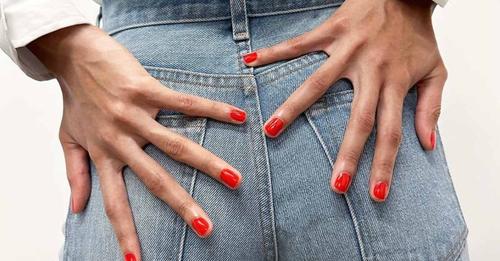In a landfill, shoes rise to the top, like cream in a cup of coffee. The buoyant rubber soles work their way through the tons of compacted garbage and layers of topsoil to float on the surface. On a recent trip to the Fairless Landfill on Morrisville, Pennsylvania, with a group of designers and FIT students, I saw three pairs of Crocs on a 20-minute stroll. Bobby Jones, who works at Waste Management, regaled us with stories of the weirdest things he’s seen come to the landfill. The winner? A whale, cut into half and delivered in two trucks.
Trash has been having a bit of a fashion moment. The New York Times heralded “trashion” as the new frontier — where designers would use discarded fabric to make gowns so beautiful you would never guess it was made with scraps. Upcycling is a buzzword at this point. But in order to conquer fashion’s massive waste problem, you have to understand what you’re up against. So that’s part of the reason why FIT students, Brooklyn-based designers, and I were hiking the Fairless Landfill last week. We were there because of the Slow Factory’s Landfills As Museums initiative.
Céline Semaan, a designer, researcher, and executive director of Slow Factory, started Landfills As Museums last year. She collaborated with adidas and partnered with Waste Management’s Environmental and Construction manager, Jay Kaplan, and Theanne Schiros, a professor of science and sustainability at FIT, to put together a field trip for the students so they could see, up close, where the majority of clothing ends up. Sustainable Brooklyn, a group that amplifies black and indigenous voices in environmentalist spaces, brought a group of designers, stylists, and small-business owners along, too. One designer, Akila Stewart, makes handbags out of old laundry-detergent containers, covered in scrap leather.
One student grew visibly upset as a recycling expert explained how only less than 10 percent of all plastic in the U.S. is actually recycled. Dominique Drakeford, the co-founder of Sustainable Brooklyn, offered ways to reuse those unrecyclable plastics, like turning berry cartons into seed planters.
“This part of the life cycle is rarely seen and rarely understood,” Drakeford said. “We are a culture of disposability. Being able to experience this part of the system is important so we can come up with ideas about how to manage waste and mitigate it in our own communities.”
Walking around the active landfill, clad in neon vests and hard hats to keep us safe from being hit by trucks or pecked by seagulls, it became apparent why the outing was called “landfills as museums.” The term museum is apt, because it opened a space for curious reflection and spongelike learning, rather than a symposium offering concrete solutions. “Landfills are the archeological museums of the future,” Semaan said. “We wanted to create a space that removes all stigma around waste, from shame to fear to guilt around end of life, and explore landfills as a cultural site.”
You can imagine a museum in 2150 picking up trash from Fairless to put on display like prehistoric ceramics — a faux-pearl necklace; a lone size 13 Croc; hell, maybe even the remains of the bisected whale.







